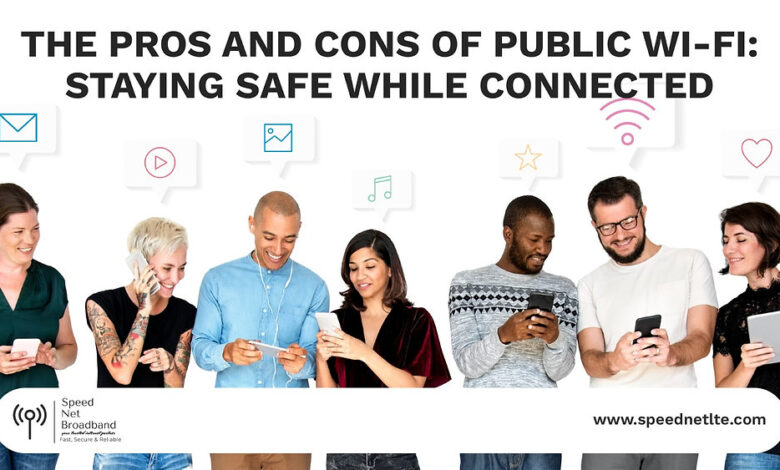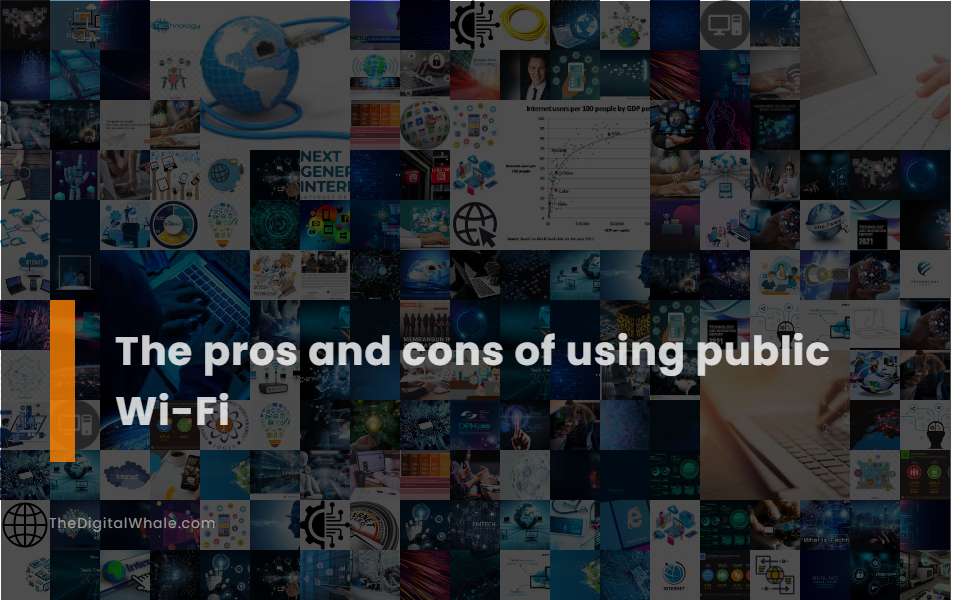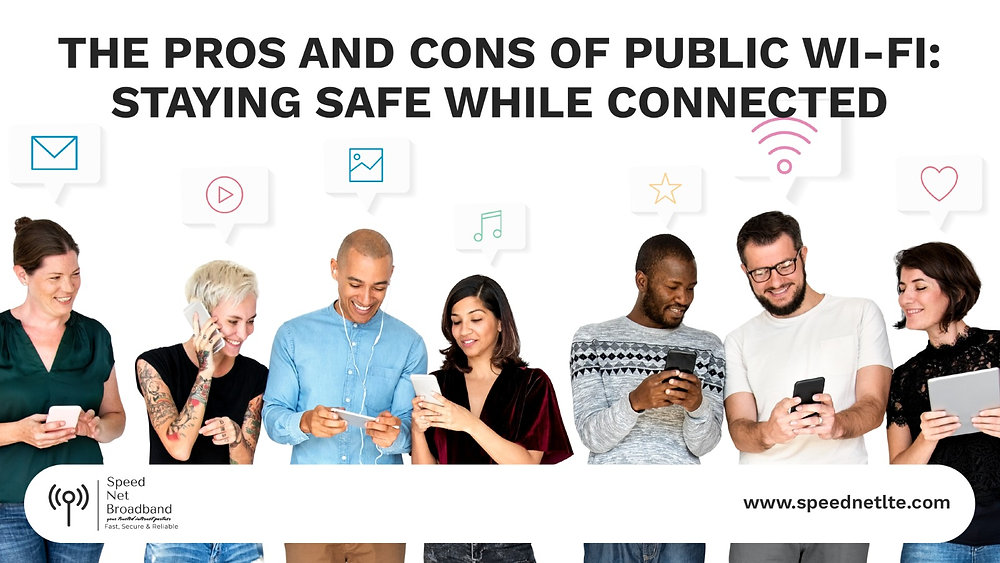
Case Against City Wifi A Deep Dive
Case against city wifi? It sounds drastic, right? But before you dismiss the idea of free citywide internet as a utopian dream, let’s explore the less glamorous side. From hefty price tags and potential security nightmares to the very real concerns about privacy and equitable access, the reality of implementing a city-wide Wi-Fi network is far more complex than simply stringing up some routers.
This post delves into the arguments against this seemingly simple solution, examining the financial, security, technical, social, and legal hurdles that often stand in the way.
We’ll unpack the substantial costs involved – not just the initial setup but the ongoing maintenance and potential opportunity costs of diverting funds from other vital city services. We’ll also discuss the very real security risks, including data breaches and the potential for increased surveillance. Think about it: free Wi-Fi might sound great, but at what cost to your privacy and the city’s budget?
Financial Arguments Against City-Wide Wi-Fi
The allure of free, city-wide Wi-Fi is undeniable, promising increased connectivity and economic benefits. However, a closer examination reveals significant financial hurdles and potential drawbacks that warrant careful consideration before embarking on such a large-scale project. This analysis will focus on the substantial financial costs and the opportunity costs associated with diverting public funds towards this initiative.
Infrastructure Costs of City-Wide Wi-Fi
Implementing a city-wide Wi-Fi network requires a substantial upfront investment. The initial infrastructure costs can be broken down into several key components. Hardware costs include the purchase and installation of numerous access points (APs), routers, switches, and possibly fiber optic cabling to connect these components. Software costs encompass licensing fees for network management software, security software, and potentially custom applications for user authentication and management.
Installation costs involve the labor required to deploy the hardware, including site surveys, cabling, mounting APs, and configuring the network. Finally, ongoing maintenance encompasses routine tasks like software updates, hardware repairs, and network troubleshooting. For a mid-sized city, these costs could easily reach tens of millions of dollars, depending on the network’s density and coverage area. For example, the city of San Francisco’s early attempts at citywide Wi-Fi in the 2000s, ultimately deemed unsuccessful, illustrate the substantial expense involved, with costs far exceeding initial projections.
Funding Sources and Opportunity Costs
Funding for city-wide Wi-Fi projects typically comes from a combination of sources, including municipal bonds, grants, private sector partnerships, and potentially user fees. However, securing sufficient funding can be challenging, especially in times of budgetary constraints. The crucial aspect to consider is the opportunity cost – the potential benefits forgone by allocating resources to city-wide Wi-Fi instead of other vital public services.
This involves considering alternative uses of these funds, such as investments in essential infrastructure (road repairs, public transportation upgrades), education (improving schools, expanding teacher training), or social programs (affordable housing initiatives, healthcare improvements). The decision to invest in city-wide Wi-Fi requires a careful evaluation of whether the potential benefits outweigh the potential benefits of these other essential projects.
Return on Investment Compared to Alternative Projects
A crucial aspect of evaluating the financial viability of city-wide Wi-Fi is comparing its projected return on investment (ROI) to that of alternative public projects. This comparison highlights the opportunity costs involved. While proponents argue that city-wide Wi-Fi boosts economic activity and attracts businesses, quantifying this impact is difficult, and the ROI can be uncertain. The following table presents a hypothetical comparison, illustrating the potential trade-offs:
| Project | Estimated Cost (Millions) | Projected Benefit | Opportunity Cost |
|---|---|---|---|
| City-Wide Wi-Fi | $20 | Increased tourism, business attraction (difficult to quantify precisely) | Potential improvements to public transportation, schools, or affordable housing |
| Public Transportation Upgrade | $20 | Reduced commute times, improved air quality, increased accessibility | Potential expansion of city-wide Wi-Fi or other initiatives |
| School Infrastructure Improvement | $20 | Improved learning environment, better educational outcomes | Potential for city-wide Wi-Fi or other public works projects |
| Affordable Housing Initiative | $20 | Increased access to affordable housing, reduced homelessness | Potential improvements to city infrastructure or educational programs |
Security and Privacy Concerns Regarding City-Wide Wi-Fi
The allure of free, city-wide Wi-Fi is undeniable, promising increased connectivity and economic benefits. However, a critical examination reveals significant security and privacy risks that must be carefully considered before implementing such a large-scale network. These risks extend beyond simple inconvenience; they pose potential threats to individual citizens and the city’s overall digital infrastructure. The scale of a city-wide network magnifies vulnerabilities, making it a prime target for malicious actors.The potential for data breaches and unauthorized access on a public Wi-Fi network is substantial.
Unencrypted data transmitted over such a network is easily intercepted by anyone with the right tools. This includes sensitive personal information like passwords, banking details, and medical records. Furthermore, the sheer volume of data flowing through a city-wide network creates a lucrative target for sophisticated cyberattacks, potentially impacting not just individual users but critical city infrastructure as well.
Data Collection and Surveillance Capabilities, Case against city wifi
A city-wide Wi-Fi network inherently facilitates widespread data collection and surveillance. Network administrators, and potentially even third-party companies involved in managing the network, can potentially monitor user activity, track location data, and even access the content of communications. This raises serious concerns about privacy violations, particularly in the absence of robust and transparent data protection policies. The potential for misuse of this data, for example, in targeted advertising or even government surveillance, is a significant threat to civil liberties.
The lack of clear regulations and oversight in this area creates a fertile ground for abuse.
Comparison of Security Measures in Other Cities
Several cities have already implemented city-wide Wi-Fi networks, each employing varying levels of security and privacy measures. Analyzing these approaches allows us to identify both effective strategies and potential pitfalls. A comparative analysis highlights the complexities involved in balancing accessibility with security.
| City | Security Measures | Strengths | Weaknesses |
|---|---|---|---|
| Example City A (e.g., a city known for strong security) | Strong encryption (WPA2/3), regular security audits, robust access control, data anonymization policies | High level of data protection, minimized vulnerability to attacks | High implementation costs, potential for reduced accessibility due to strict controls |
| Example City B (e.g., a city with a less secure network) | Basic encryption (WPA), limited monitoring, weak access control | Low implementation costs, high accessibility | High vulnerability to attacks, significant risk of data breaches, potential for privacy violations |
| Example City C (e.g., a city with a hybrid approach) | Zoned network with varying levels of security based on location (e.g., higher security in sensitive areas), regular security updates, user authentication options | Balances accessibility and security, allows for targeted security measures | Complexity in implementation and management, potential for inconsistencies in security levels |
Note: The specific security measures and their effectiveness vary significantly depending on the city’s infrastructure, budget, and regulatory framework. This table provides illustrative examples and should not be considered an exhaustive analysis of all city-wide Wi-Fi networks.
Technical Challenges and Limitations of City-Wide Wi-Fi

Rolling out a city-wide Wi-Fi network sounds fantastic – free internet for everyone! But the reality is far more complex than simply stringing up some access points. Significant technical hurdles exist, impacting both the initial deployment and the ongoing maintenance of such a vast network. These challenges often outweigh the perceived benefits, especially when considering the financial and societal implications.Implementing and maintaining a city-wide Wi-Fi network presents a multitude of technical difficulties.
These obstacles range from ensuring consistent coverage across diverse geographical terrains to managing the inevitable network congestion and bandwidth limitations that arise from a large number of concurrent users. The sheer scale of the undertaking demands careful planning and significant investment in robust infrastructure.
Coverage Limitations and Network Architecture
Achieving consistent and reliable Wi-Fi coverage across an entire city is a major challenge. Buildings, hills, and even dense foliage can significantly weaken Wi-Fi signals, creating dead zones where users experience poor or no connectivity. To overcome this, a sophisticated network architecture is required, often involving a combination of different technologies and deployment strategies. This might include strategically placed access points (APs), mesh networks to extend coverage, and possibly even the use of cellular backhaul in areas with limited wired connectivity.
The design must consider factors such as signal propagation, interference from other wireless devices, and the density of users in different areas. For example, a densely populated downtown area will require a much higher density of APs compared to a sparsely populated residential suburb. The chosen network architecture must be scalable to accommodate future growth and technological advancements.
Network Congestion and Bandwidth Constraints
A city-wide Wi-Fi network will inevitably experience periods of high congestion, especially during peak usage times. This can lead to slow speeds, dropped connections, and a generally poor user experience. The available bandwidth is a critical factor. The capacity of the network’s backbone infrastructure, including internet connections and internal network links, directly impacts the overall performance. Insufficient bandwidth can lead to bottlenecks, severely impacting the user experience, even with a well-designed network architecture.
Cities like San Francisco, which have experimented with extensive public Wi-Fi, have faced these challenges, demonstrating the need for robust planning and ongoing monitoring of network performance. Effective traffic management techniques, such as quality of service (QoS) prioritization, are essential to ensure that critical services receive adequate bandwidth even during peak demand.
Wi-Fi Technologies and Protocols
Choosing the appropriate Wi-Fi technologies and protocols is crucial for optimizing performance and cost-effectiveness. Several options exist, each with its own advantages and disadvantages:
- 802.11ac/ax: These are the latest Wi-Fi standards, offering high speeds and improved efficiency. However, they require newer hardware and may not be compatible with older devices. They also tend to have a shorter range than older standards.
- 802.11n: A widely adopted standard, offering a good balance between speed and compatibility. However, it’s becoming increasingly outdated and less efficient compared to newer standards.
- Mesh Networking: This technology utilizes multiple access points to create a self-healing network, extending coverage and improving reliability. It is particularly useful in overcoming coverage limitations in challenging environments. However, it requires careful planning and configuration to avoid interference and ensure optimal performance.
- Licensed vs. Unlicensed Spectrum: Using licensed spectrum offers dedicated bandwidth and avoids interference, but it’s expensive. Unlicensed spectrum is free but prone to interference from other devices. The choice depends on the city’s budget and regulatory environment.
The selection of technology must consider factors such as cost, coverage requirements, compatibility with existing infrastructure, and future scalability. A hybrid approach, combining different technologies to address specific needs, might be the most practical solution for a city-wide network.
Social and Economic Impacts of City-Wide Wi-Fi
City-wide Wi-Fi networks present a complex tapestry of potential social and economic consequences. While promising increased connectivity and economic opportunities, they also raise concerns about equity, digital divides, and the potential displacement of existing businesses. A thorough analysis requires considering the impacts across various socioeconomic groups and on the broader economic landscape.
Socioeconomic Impacts of City-Wide Wi-Fi Access
The benefits of city-wide Wi-Fi are not evenly distributed. Low-income individuals and communities, often lacking reliable internet access at home, could significantly benefit from free public Wi-Fi, enabling access to education, job opportunities, and essential online services. This could bridge the digital divide and promote social inclusion. However, concerns remain that the digital literacy required to utilize these services effectively might be lacking in certain demographics, negating the potential benefits.
Furthermore, the placement of Wi-Fi hotspots could inadvertently create further disparities if strategically located only in affluent areas, exacerbating existing inequalities. Businesses might also experience varying impacts depending on their proximity to hotspots and their ability to leverage the increased connectivity.
Impact on Local Businesses and the Overall Economy
City-wide Wi-Fi can stimulate economic growth by attracting businesses and tourists who rely on reliable internet access. This increased connectivity can lead to higher productivity, improved customer service, and the emergence of new online businesses. However, it could also negatively affect some businesses, particularly those offering internet access services, which might experience decreased demand. The overall economic impact depends on factors such as the network’s coverage, accessibility, and the city’s ability to support the growth of digital industries.
Moreover, the costs associated with building and maintaining the network, and potential security concerns, need careful consideration to prevent economic drawbacks.
Examples of City-Wide Wi-Fi Implementations
Several cities have attempted to implement city-wide Wi-Fi networks with varying degrees of success. The success or failure often hinges on factors like adequate funding, robust infrastructure, effective management, and a clear understanding of the community’s needs.
| City | Outcome | Reasons |
|---|---|---|
| San Francisco (Early Attempts) | Partial Success/Failure | Insufficient funding and technical challenges led to limited coverage and inconsistent service. The project was eventually scaled back. |
| London (The Source) | Limited Success | While initially successful in providing free Wi-Fi in certain areas, the project faced challenges in maintaining the network and expanding coverage across the entire city. |
| Ashburn, Virginia (Google Fiber) | Success | Significant investment in high-speed fiber optic infrastructure provided a robust foundation for widespread Wi-Fi access, demonstrating the importance of adequate funding and robust infrastructure. |
Legal and Regulatory Aspects of City-Wide Wi-Fi

Deploying a city-wide Wi-Fi network presents a complex web of legal and regulatory hurdles that must be carefully navigated to ensure compliance and avoid potential liabilities. These challenges extend beyond simple technical considerations, impacting everything from network design and data security to public access and liability for misuse.
Zoning Regulations and Licensing Requirements
Implementing a city-wide Wi-Fi network necessitates compliance with various zoning regulations and licensing requirements. These regulations often vary significantly between jurisdictions, impacting the placement of access points, the type of infrastructure permitted (e.g., rooftop installations versus ground-level deployments), and even the visual aesthetics of the network equipment. For instance, some cities may have strict regulations regarding the height and visibility of antennas, while others might prioritize minimizing visual clutter.
Obtaining the necessary licenses and permits can be a time-consuming and resource-intensive process, requiring extensive planning and coordination with local authorities. Failure to comply with these regulations can lead to significant fines and legal challenges, potentially delaying or even halting the project entirely.
Data Privacy and Security Legal Frameworks
The legal frameworks governing data privacy and security in relation to public Wi-Fi networks are critical. These regulations vary considerably across jurisdictions, but often center on data protection laws such as GDPR (in Europe) and CCPA (in California). These laws mandate specific measures to protect user data, including encryption protocols, data retention policies, and transparency regarding data collection and usage.
City-wide Wi-Fi networks, given their extensive reach and potential for data interception, must adhere strictly to these regulations to avoid legal repercussions and maintain public trust. A failure to protect user data can lead to significant fines, legal action from affected individuals, and reputational damage for the city. Implementing robust security measures, such as strong encryption and regular security audits, is crucial for compliance.
Comparative Jurisdictional Approaches to City-Wide Wi-Fi
Different jurisdictions have adopted varying approaches to regulating city-wide Wi-Fi networks. Some cities, like Chattanooga, Tennessee, have successfully implemented city-owned and operated networks, demonstrating the potential benefits of public Wi-Fi. However, other cities have faced significant challenges, often due to regulatory hurdles, cost overruns, and concerns about liability. The legal frameworks governing the deployment and operation of such networks differ significantly, ranging from relatively permissive regulations to more stringent requirements.
Best practices include establishing clear data privacy policies, implementing robust security measures, and engaging in transparent public consultation during the planning and implementation phases. Conversely, potential pitfalls include insufficient consideration of regulatory requirements, inadequate security measures leading to data breaches, and lack of public trust due to opaque governance structures. Studying the successes and failures of similar projects in other jurisdictions is vital for effective planning and implementation.
Liability Concerns Associated with City-Wide Wi-Fi
The city deploying a city-wide Wi-Fi network faces potential liability concerns. This includes liability for data breaches, misuse of the network for illegal activities, and potential harm caused by network failures. Determining the appropriate level of liability insurance and establishing clear terms of service is crucial to mitigate these risks. For example, the city might be held liable if the network is used to facilitate illegal activities, such as distributing copyrighted material or conducting fraudulent transactions.
Establishing robust security protocols and monitoring systems can help mitigate some of these risks, but the potential for liability remains a significant consideration. Clearly defined terms of service, which Artikel the city’s responsibilities and the users’ obligations, can further reduce liability. Furthermore, robust incident response plans are essential to effectively address security incidents and minimize potential damages.
Final Thoughts
Ultimately, the case against city-wide Wi-Fi isn’t about rejecting technological progress; it’s about responsible planning and a realistic assessment of costs and benefits. While the promise of ubiquitous internet access is alluring, a thorough examination of the financial, security, and social implications is crucial before embarking on such a massive undertaking. The decision isn’t simply about connectivity; it’s about weighing the potential gains against the potential pitfalls and ensuring a truly equitable and secure digital future for all citizens.
Q&A: Case Against City Wifi
What about existing private Wi-Fi networks? Wouldn’t those suffice?
Private networks offer coverage in specific areas, but city-wide Wi-Fi aims for comprehensive, public access. Private networks often lack the capacity and reach needed for a whole city.
How can city-wide Wi-Fi address the digital divide?
While aiming to bridge the digital divide is a common goal, city-wide Wi-Fi’s success depends on factors like affordability of devices and digital literacy programs. Simply providing access doesn’t guarantee equitable use.
Isn’t this just about free internet?
It’s much more than that. It involves significant infrastructure investment, ongoing maintenance, security concerns, privacy implications, and the potential displacement of funds from other crucial services.





